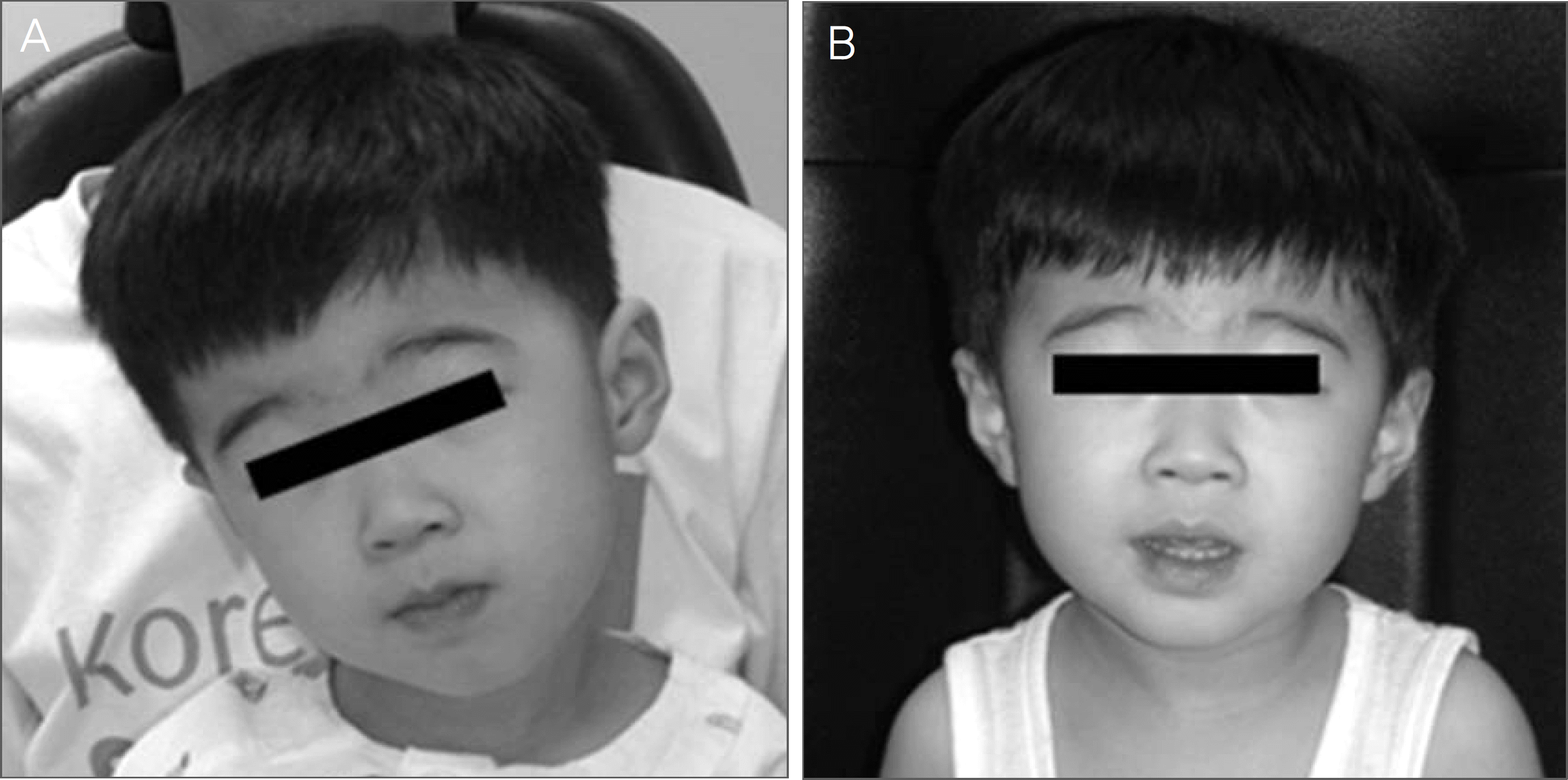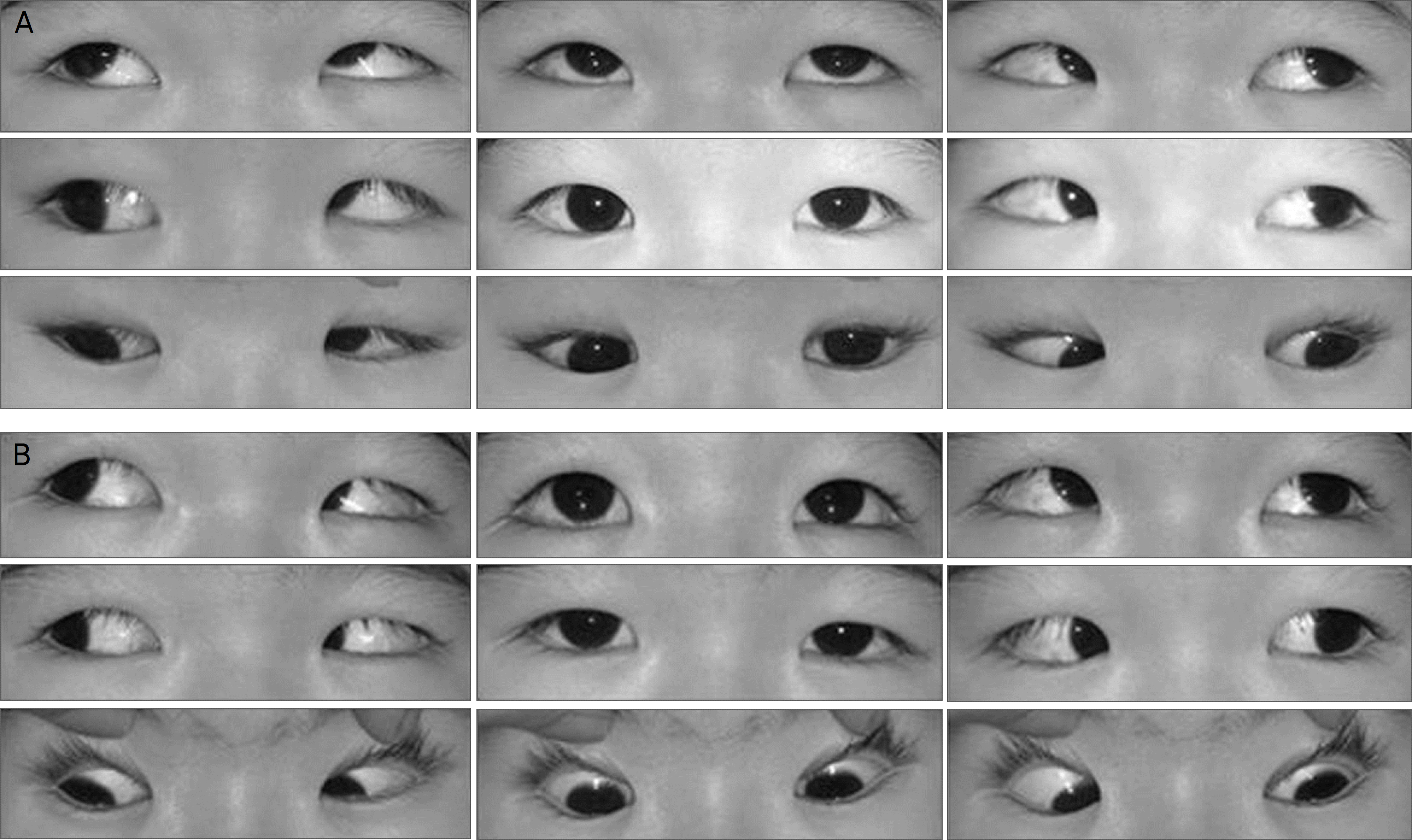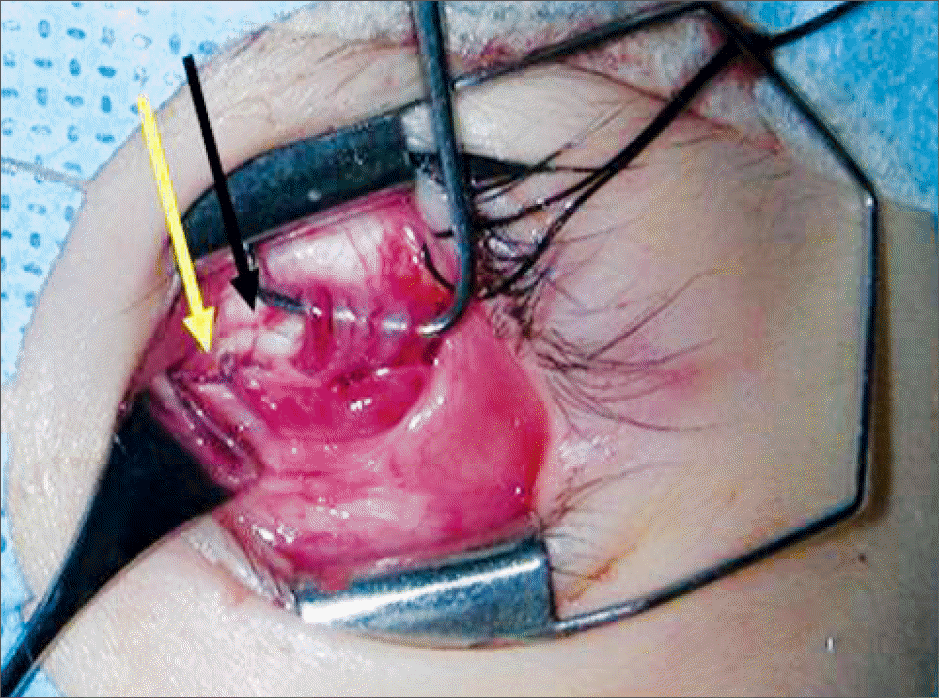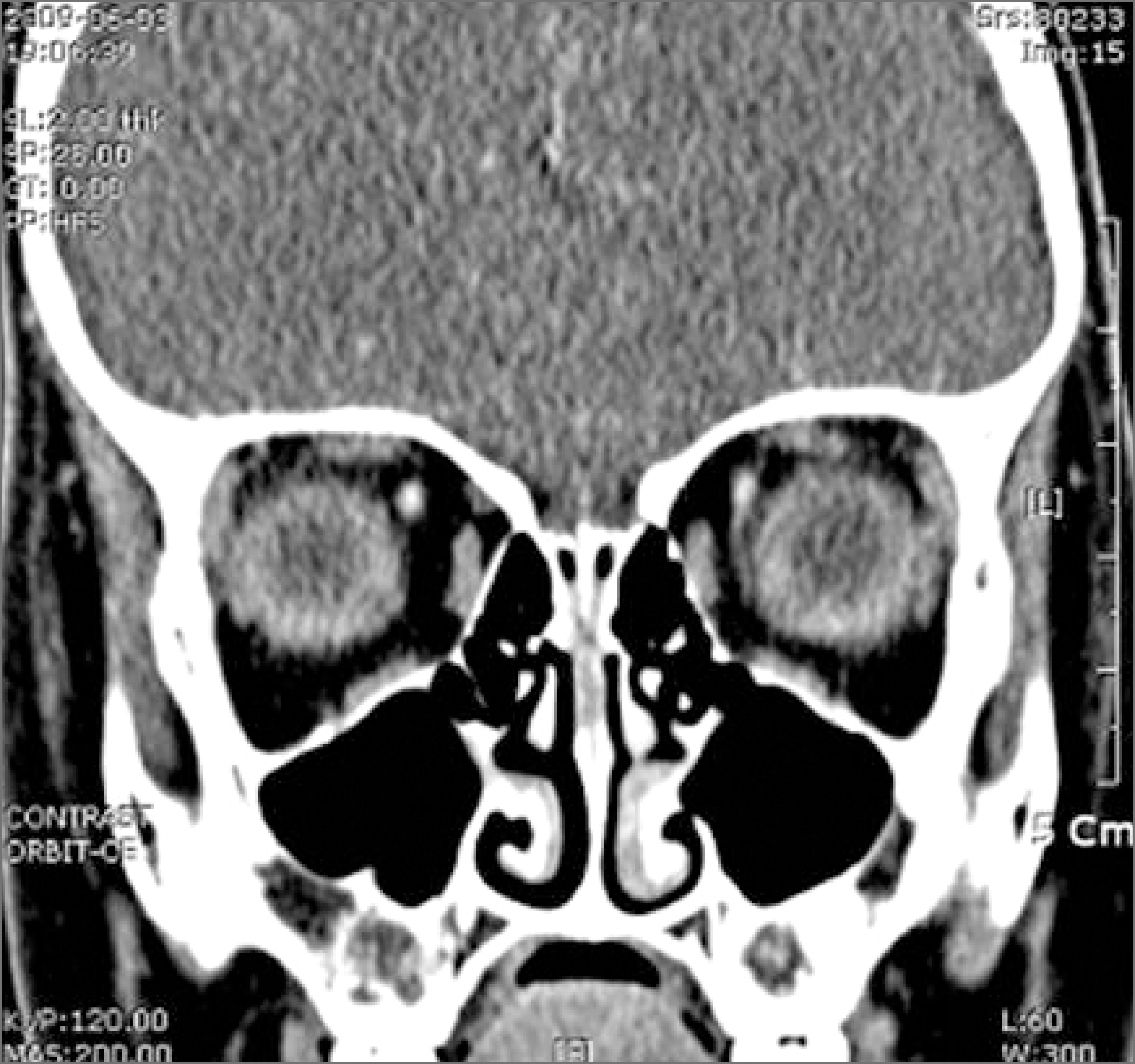Abstract
Purpose
To report a patient with absence of the superior oblique (SO) muscle of the left eye, who showed improvement after anterior and nasal transposition of the inferior oblique muscle for left hyperdeviation and right head tilt.
Case summary
A two-year-old boy presented with hypertropia of the left eye and right head tilt. Alternate prism-cover test in the primary position demonstrated 18 prism diopters (PD) of left hypertropia, which increased to 35 PD in the left head tilt position. A version test demonstrated overaction of the left inferior oblique muscle and underaction of the left superior oblique muscle. As an orbit CT scan showed absence of the SO muscle, the patient was diagnosed with congenital absence of SO and left anterior and nasal transposition of the inferior oblique muscle was performed. Three weeks after surgery, the patient presented with orthotropia at distant and near. The version test revealed normal oblique muscles. There was no vertical deviation shown on the Bielschowsky head tilt test. The abnormal head posturing was no longer observed.
Go to : 
References
1. Pinchoff BS, Sandall G. Congenital absence of the superior oblique tendon in craniofacial dysostosis. Ophthalmic Surg. 1985; 16:375–7.

2. Pollard ZF. Bilateral superior oblique muscle palsy associated with Apert's syndrome. Am J Ophthalmol. 1988; 106:337–40.

3. Lo CY, Nakamura K. Congenital absence of the superior oblique tendon in Down's syndrome. Jpn Rev Clin Ophthalmol. 1987; 81:1312–3.
4. Barnes J, Boniuk M. Anencephaly with absence of the superior oblique tendon. Surv Ophthalmol. 1972; 16:371–4.
5. Wallace DK, von Noorden GK. Clinical characteristics and surgical management of congenital absence of the superior oblique tendon. Am J Ophthalmol. 1994; 118:63–9.

6. Cho YA, Kim S. A case of congenital absence of the superior oblique muscle. J Korean Ophthalmol Soc. 2004; 45:631–5.
7. Stager DR Jr, Beauchamp GR, Wright WW, et al. Anterior and nasal transposition of the inferior oblique muscles. J AAPOS. 2003; 7:167–73.

8. Hussein MA, Stager DR Jr, Beauchamp GR, et al. Anterior and nasal transposition of the inferior oblique muscles in patients with missing superior oblique tendons. J AAPOS. 2007; 11:29–33.

Go to : 
 | Figure 1.(A) Before surgery. The child showed right head tilt preoperatively. (B) Three weeks after surgery. The head tilting disappeared after anterior and nasal transposition of the inferior oblique muscle. |
 | Figure 2.(A) Before surgery. The patient shows severe superior oblique underaction and inferior oblique overaction of the left eye. (B) Three weeks after surgery. The dysfunction of both oblique muscles in the left eye improved significantly. |
 | Figure 3.(A) Preoperative forced head tilt test. The patient showshypertropia on left side head tilt. (B) Postoperative forced head tilt test. There is no vertical deviation on head tilt test. |
 | Figure 5.The inferior oblique muscle is transposed anterior-nasally to the nasal border of the insertion of the inferior rectus muscle. A black arrow indicates the medial border of the inferior rectus muscle insertion, and a yellow arrowindicates the new insertion site of the inferior oblique muscle. |




 PDF
PDF ePub
ePub Citation
Citation Print
Print



 XML Download
XML Download